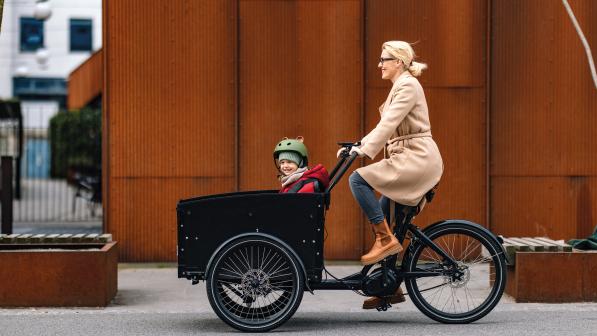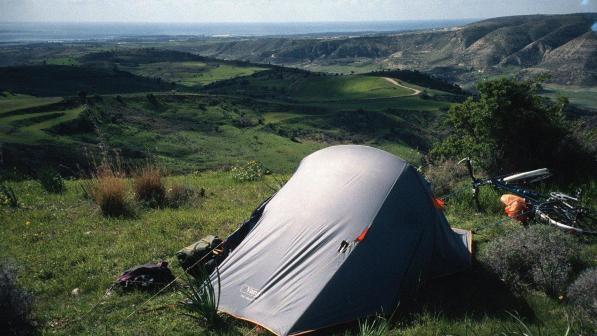Great rides: Springtime in Cyprus

Pedalling uphill for 12km to gain 500m had clearly taken it out of me. The waitress at the coffee shop at Pano Panagia in the Paphos mountain range didn’t ask whether I wanted a sweet treat but rather which one.
As I ate, I pondered the cycling in Cyprus. It’s a beautiful, friendly country, drenched in sun and filled with millennia of history. This spot, leading directly into Cedar Valley, was road cycling heaven: peaceful roads; plentiful trees, birdsong and wildlife; and outstanding views.
My home tour of Cyprus was a long time coming. I finally realised that, as much as I thought I’d ridden a lot here, I really hadn’t. And while I’d often gazed wistfully at photos of far-flung places, I’d neglected what was on my own doorstep.
For this tour, I wanted to ride new roads and have time to appreciate the places I was visiting, rather than trying to fit in as much as possible. A friend helped me plan a route for late March, and I booked accommodation and packed my bikepacking bags.
I didn’t carry a lot but needed to be prepared for changeable weather; storms can hit year round.
Mines, churches and mountains

The cosmopolitan town of Larnaca was a fitting place to leave from. I pedalled along Finikoudes seafront in the early morning, with bars, restaurants and cafés on one side, beach and sea opposite. Anyone else out at this time was likely searching out coffee, a national pastime.
Riding north I passed through several former mining villages, such as Mitsero. (Search ‘Mitsero murders’!) Cyprus has a long history of mining.
One school of thought is that it derives its name from the Sumerian word for copper. Scars in the landscape were scattered around: mounds of earth brought from below; holes now filled with discoloured water; abandoned machinery; and a huge, rusting pit-head frame.
Cycling into the Troodos Mountains, I made sure to visit the remote Byzantine church of Panagia tis Asinou. It’s renowned for its 12th century murals and is one of a number of UNESCO heritage sites.
The Marathasa Valley is a stunning area, full of traditional villages and photo opportunities. For cyclists, it is almost entirely up or down. Riding up the valley requires 14km of climbing, so taking a picture is a great excuse to take a breather!

The village of Pedoulas is easily identifiable thanks to a 25-metre cross in the village. Religion is important here: there are 12 churches for a population of 139.
Crossing the valley on perfect S-shaped roads lined with orchids, I viewed Kykkos Monastery and the burial place of Cyprus’s first president, Archbishop Makarios III. It is easy to see the appeal of spending eternity in this spot, surrounded by pine-covered peaks and valleys that are alive with birdsong.
Drinking it in
Aiming for the coastal town of Polis took me through the Paphos Forest, where I hoped to see mouflon, the wild sheep which are the symbol of Cyprus. One website claimed this was the most beautiful road in the country. Under the shade of trees it was cold in March. The café at Stavros tis Psokas sold such lovely hot coffee that I had two.
I left Polis via sad, desolate villages such as Androlykou. The population never recovered following the inter-communal issues of the 1950s and then the conflict with Turkey in 1974. By 1976 there were 14 inhabitants; previously there had been 400. Dereliction is everywhere.
The southern face of the Paphos hills took me through acres of vineyards. There were row upon row of small, gnarled trunks ready to produce grapes for the Cypriot wine industry. I then passed Polemi, where the former British detention centre still stands as a reminder of colonial rule and of darker parts of our history.

Under early morning woodsmoke, three mouflon caught my eye. I was too slow to photograph them, so I convinced myself that being in the moment was more important than recording it.
The heart of Ezousa Valley is full of wineries and vineyards. Most gardens have fruit trees, and there are countless unpicked lemons. Springtime wildflowers were bursting into life.
Workers meant to be fixing the roads were not. The group I passed were taking time out – lying down, chatting, drinking coffee and smoking. Maybe we could learn something from their relaxed attitude?
Towards Mount Olympus, I rode through Gerovasa-Trozena. There is little evidence of Gerovasa’s existence. Trozena, although abandoned, is eerily intact. The church is still maintained while the village, stuck in time, is slowly decaying. I should have spent more time here but knew I had a 1,600m climb ahead, so I pushed on.
New journeys on old roads
There is no easy way to ride up a mountain. My way was to attack double-figure gradients with energy, then take the gentler gradients at a comfier, more consistent pace. I also stopped for the odd Cypriot coffee, which I drank like an 18-year-old drinking shots: gulp, contorted face, move on.

More and more yellow gorse appeared. Pine trees closed in around me and black flies began pinging off my helmet. I knew I was near the top. At 1,952m, Mount Olympus is Cyprus’s highest peak. I didn’t take the road up to the radar station at the summit, but pressed on.
I cycled downhill through villages such as Kyperounta, renowned for its healthy air, then Lagoudera. After that I sweated my way up to Madari, another peak, then dropped down into villages thick with almond blossom and fruit groves.
I followed a sign saying Zoopigi Old Road. Such roads aren’t uncommon in Cyprus. They’re the town/village road from once upon a time, and they’re usually quiet, wriggly and surrounded by nature. Although tarmacked, they tend not to be maintained. Nevertheless, I’m always encouraged by these ‘old road’ signs.
Along the valley on the south of the Troodos range, I zipped through an area renowned for its fruit and vegetables. Kiosks exist in most villages, providing refreshments, while coffee shops are everywhere.
My final day began with a stunning, fiery red sunrise. At the top of Kionia, I chatted to a scout leader who was sending his troops on a hike. Then I found myself on familiar roads closer to home. It had been a great trip, showing me parts of Cyprus I’d never properly explored. It was a reminder that some of the best journeys can start and end at your own back door.
Cycle magazine
Every two months Cycling UK members receive Cycle magazine, filled with interesting and informative articles, news and reviews for all cyclists.
Members can read the magazine in full online; non-members can read selected highlights.



